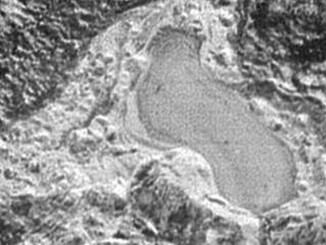
Ultima Thule, the Kuiper Belt body a billion miles past Pluto that NASA’s New Horizons probe encountered on New Year’s Day, is coming into much sharper focus in the highest resolution view yet received, a image that shows “intriguing light and dark pattern of unknown origin.”
“This new image is starting to reveal differences in the geologic character of the two lobes of Ultima Thule, and is presenting us with new mysteries as well,” said Alan Stern, the New Horizons principal investigator. “Over the next month there will be better colour and better resolution images that we hope will help unravel the many mysteries of Ultima Thule.”
The latest image was captured on 1 January when New Horizons was 6,700 kilometres (4,200 miles) from its target and just seven minutes before the moment of closest approach. Taken by the spacecraft’s wide-angle Multicolour Visible Imaging Camera, or MVIC, surface features 135 metres (440 feet) across could be distinguished.
“The oblique lighting of this image reveals new topographic details along the day/night boundary, or terminator, near the top,” the Applied Physics Laboratory at Johns Hopkins University said in a photo description.
“These details include numerous small pits up to about 0.7 kilometres (0.4 miles) in diameter. The large circular feature, about 7 kilometres (4 miles) across, on the smaller of the two lobes, also appears to be a deep depression. Not clear is whether these pits are impact craters or features resulting from other processes, such as ‘collapse pits’ or the ancient venting of volatile materials.”
Because of New Horizons’ enormous distance from Earth – as of this writing, 6.64 billion kilometres (4.13 billion miles) – it takes radio signals six hours and nine minutes to cross the gulf to the inner solar system. Given the probe’s relatively low-power radio system, it will take about 20 months to downlink all the images and other data collected during the New Year’s Day flyby.



